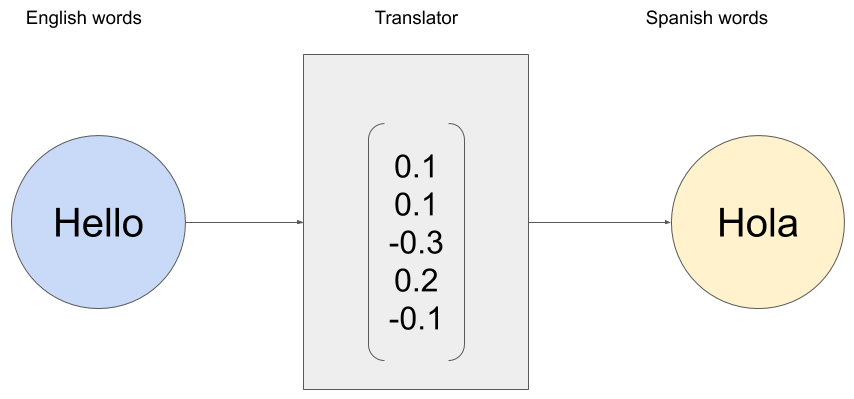As you can see from the previous paragraph, natural language understanding helps in automating the human language to a Cypher query, but it relies on some rules. These rules have to be carefully defined and you can imagine how difficult this can be when the number of rules increases. That's the reason why we can also find help in machine learning techniques, especially those related to translation, another part of NLP.
Translation consists in taking a text in a (human) language, and outputting a text in another (human) language, as illustrated in the following diagram, where the translator is a machine learning model, usually relying on artificial neural networks:

The translator's goal is to assign a value (or a vector of values) to each word, this vector carrying the meaning of the word. We will talk about this in more detail in the chapter dedicated to embedding (Chapter 10, Graph Embedding from Graphs to Matrices).
But without knowing the details...
































































